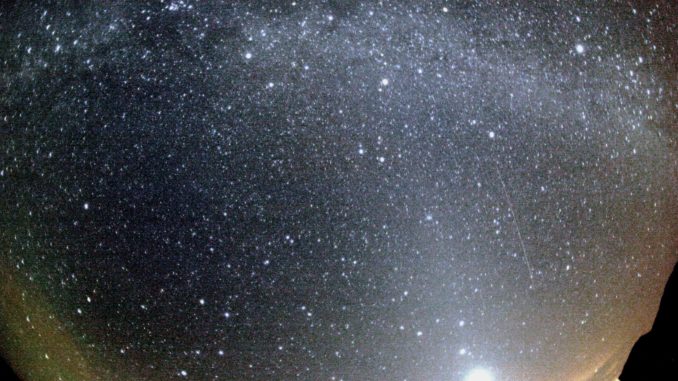
The October’s Spectacular celestial show is back after slowly building up in intensity throughout October, The Orionid meteor shower peaks later tonight.
Before going to directly into the event, Lets see what actually these Orionid meteors are.
As the Comet 1P/Halley, or Halley’s Comet as it is more commonly known, orbits the Sun it sheds bits and pieces of its outer layers.
This cosmic debris gets left behind in the comet’s orbital highway which the Earth then pass through every May and October.
In May, the debris gives birth to the Eta Aquarids meteor shower and the Orionids in October.

However the famous comet swings by the earth only once every 75 – 76 years but this annual shower provides some compensation for those who may miss that once in a lifetime event.
The Orionid October showers start each year around the start of October till the end of November.
During this period, individual meteors created by Comet 1P/Halley, burn up in the Earth’s atmosphere at incredible speeds. During this year’s peak on the nights of October 21 and October 22, astronomers expect up to 25 shooting stars to light up the night every hour.

The Orionids are one of the most notorious showers even though there are more active ones throughout the year. Orionids are known particularly for their fast and long glowing trails. Tonight, the shower will be most intense between midnight and early dawn on Monday morning.
Now let’s see how we watch see this spectacular event tonight, first thing you don’t need to have a space telescope, yes what you read is absolutely correct, these meteors can be seen with a naked eye.
As we all know, Hunting for meteors, like the rest of astronomy, is a waiting game, just make yourself comfortable the best thing you can do is lie back in a cosy position and try to take in the entire night sky at once.
They can be seen with the naked eye so there’s no need for binoculars or a telescope, though you will need to allow your eyes to adjust to the dark.
“The Orionids will appear to break out from a radiant point near the constellation Orion” this is what all we think, but there will be no need to find the constellation because the shooting stars will zip by too fast for you keep track.
Instead you just find a quiet, dark spot devoid of any sources of light.
Try to avoid urban areas, roads and street lamps which could under your viewing experience.
Just remember your eyes might take anywhere from 20 to 30 minutes to completely adjust to the dark.
The showers will continue at a reduced rate, so if the Moon obscures the peak, you may still be able to catch a few throughout the rest of October.
Lets learn a bit about this comet and the memories it has in our history.
Halley’s Comet or Comet Halley, officially designated 1P/Halley, is a short-period comet visible from Earth every 75–76 years.Halley is the only known short-period comet that is regularly visible to the naked eye from Earth, and the only naked-eye comet that might appear twice in a human lifetime. Halley last appeared in the inner parts of the Solar System in 1986 and will next appear in mid-2061.
Halley’s returns to the inner Solar System have been observed and recorded by astronomers since at least 240 BC. Clear records of the comet’s appearances were made by Chinese, Babylonian, and medieval European chroniclers, but, at those times, were not recognized as reappearances of the same object. The comet’s periodicity was first determined in 1705 by English astronomer Edmond Halley, after whom it is now named.
During its 1986 apparition, Halley’s Comet became the first comet to be observed in detail by spacecraft, providing the first observational data on the structure of a comet nucleus and the mechanism of coma and tail formation. These observations supported a number of longstanding hypotheses about comet construction, particularly Fred Whipple’s “dirty snowball” model, which correctly predicted that Halley would be composed of a mixture of volatile ices—such as water, carbon dioxide, and ammonia—and dust. The missions also provided data that substantially reformed and reconfigured these ideas; for instance, it is now understood that the surface of Halley is largely composed of dusty, non-volatile materials, and that only a small portion of it is icy.
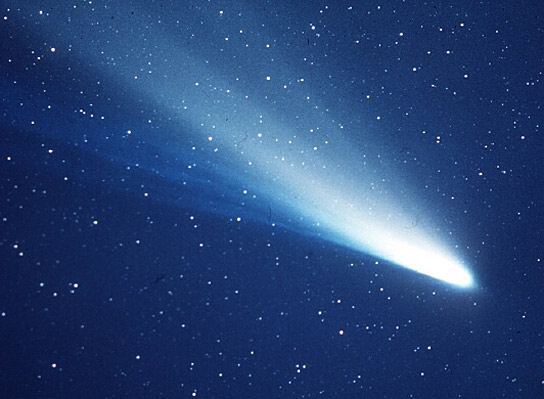
Credits: NASA
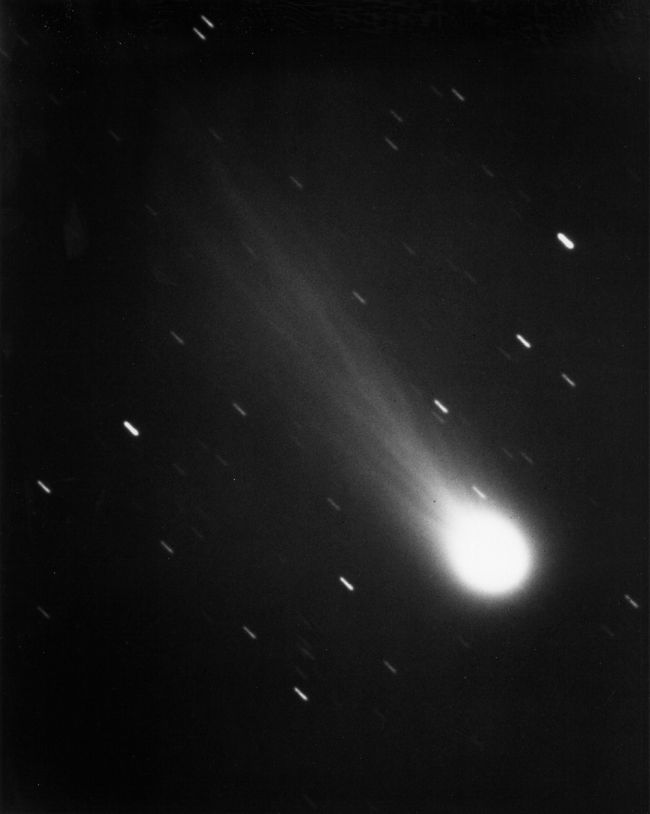
This photograph of Halley’s Comet was taken January 13,1986, by James W. Young, resident astronomer of JPL’s Table Mountain Observatory in the San Bernardino Mountains, using the 24-inch reflective telescope.
Streaks caused by the exposure time are stars in the constellation Aquarius. Visible in the photo are the coma of gases and about 725,000 kilometers (450,000 miles) of the charged ion tail.
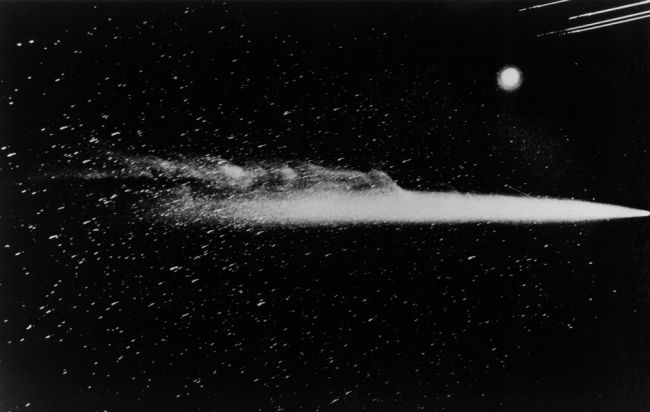
Halley’s Comet as photographed May 13, 1910, by a wide-angle camera at Lowell Observatory, Flagstaff, Ariz., during the comet’s last appearance. A streak across the comet near the coma is a meteor trail, and not a scratch on the negative. Streaks at the bottom right are the city lights of Flagstaff Bright spot above the city lights is the planet Venus.
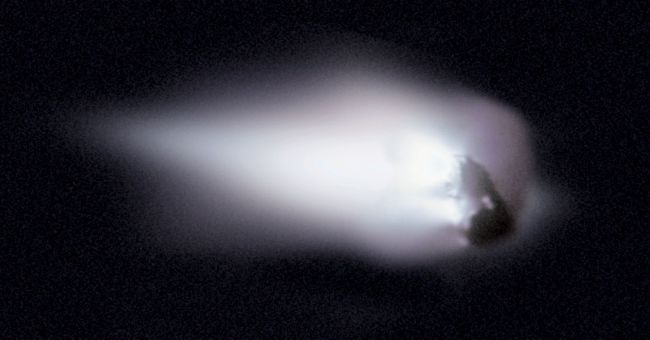
This view of comet Halley’s nucleus was obtained by the Halley Multicolour Camera (HMC) on board the Giotto spacecraft, as it passed within 600 km of the comet nucleus on March 13, 1986.
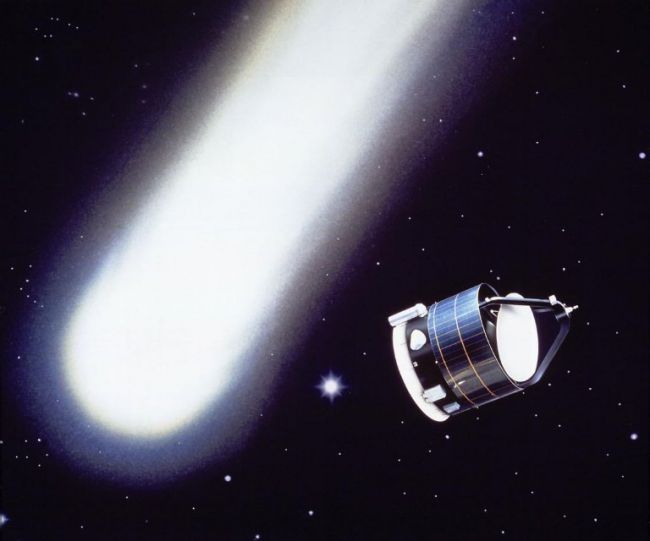
The Giotto space probe, launched in 1985 on an Ariane 1 V14 launcher, brushed past the hidden nucleus of Halley’s comet in 1986.
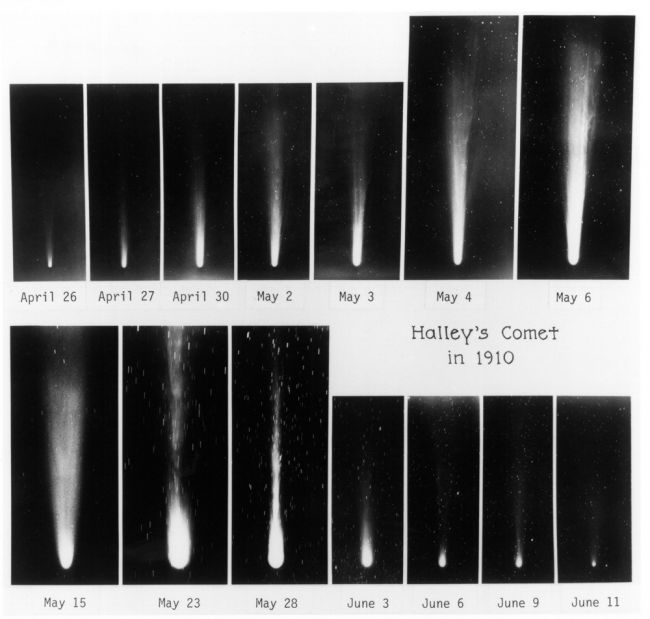
These images show Comet Halley as it was photographed on various dates in 1910 from Diamond Head, Hawaii, by Ferdinand Ellerman. The points or short streaks are background stars.
The Adoration of the Magi
‘The Adoration of the Magi’ is a scene in a fresco cycle decorating the interior of the Scrovegni Chapel in Padua. The fresco was painted by the Florentine master Giotto di Bondone, probably in 1303 and 1304. Halley’s Comet had appeared in 1301, and inspired the artist to depict the Star of Bethlehem as a fiery comet.
When the European Space Agency elected to send a spacecraft to encounter the comet, the spacecraft was named after the artist. Reproduction of the painting is by the courtesy of the Comune di Padova.
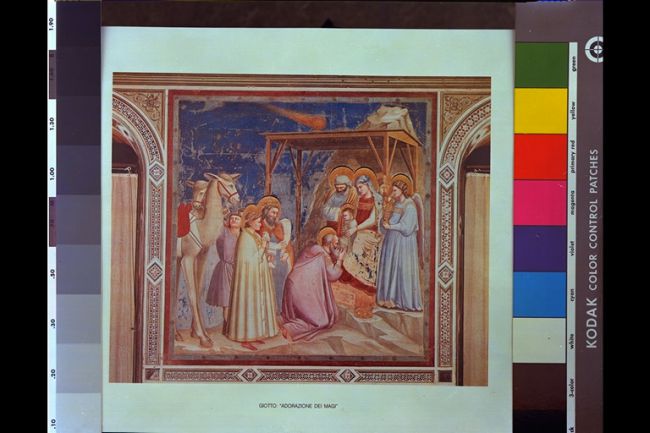
Unfortunately, this year, the Orionids are going to face a handicap. When the Orionid meteors reach their peak on Tuesday morning (Oct. 22), the moon — just past last quarter — will also be in the after-midnight sky. Hence, its glare will somewhat hamper observations in 2019.
After peaking on Tuesday morning, activity will begin to slowly descend, dropping back to around five visible meteors per hour around Oct. 25. As reported by Space.com
So, cheers to all stargazers, sky watchers, astronomy lovers and the explorers, don’t miss this out and don’t forget to remind your friends